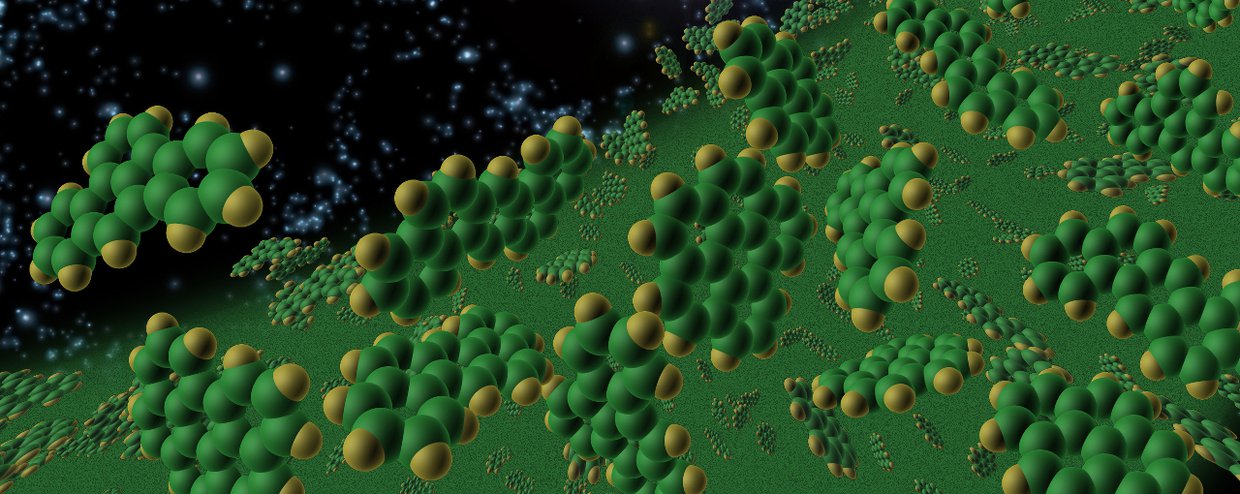
Sept. 7, 2019
Research Highlight
Irradiating Polycyclic Aromatic Hydrocarbons
Experimental results reveal similarities with astronomical observations.

An artist's conception symbolically represents complex organic molecules, known as polycyclic aromatic hydrocarbons (PAHs), seen in the early universe. The large molecules, comprised of carbon and hydrogen, are thought to be among life's building blocks.Image credit: NASA/JPL-Caltech/T. Pyle (SSC).
A recent study supported in part by the NASA Exobiology Program provides details on how irradiation affects polycyclic aromatic hydrocarbons (PAHs). PAHs are diverse in structure and are found in a wide variety of environments on Earth. These molecules have also been identified in the interstellar medium and in comets. Some scientists believe that PAHs could have played a role in the origins of life on Earth because of their availability in the Universe and their high stability. Understanding how the space environment affects PAHs, as well as their distribution in the Universe, could be important in guiding the search for life toward locations that contain the right conditions for the origins of living cells.
Researchers exposed samples of a specific PAH known as Isoviolanthrene (C34H18) to ultraviolet light. Thin films of Isoviolanthrene were also irradiated with a variety of energy sources, including ultraviolet photons, soft electrons, protons, and He+ particles. This was done to provide insight into how different energy sources can affect the molecules. The results reveal similarities between the experimental findings and astronomical observations of PAHs in space.
The study, “PAH Products and Processing by Different Energy Sources,” was published in the journal The Astrophysical Journal. The work was supported by NASA Astrobiology through the Exobiology Program. This newly-revealed science is also a critical part of NASA’s work to understand the universe, advance human exploration, and inspire the next generation. As NASA’s Artemis program moves forward with human exploration of the Moon, the search for life on other worlds remains a top priority for the agency.